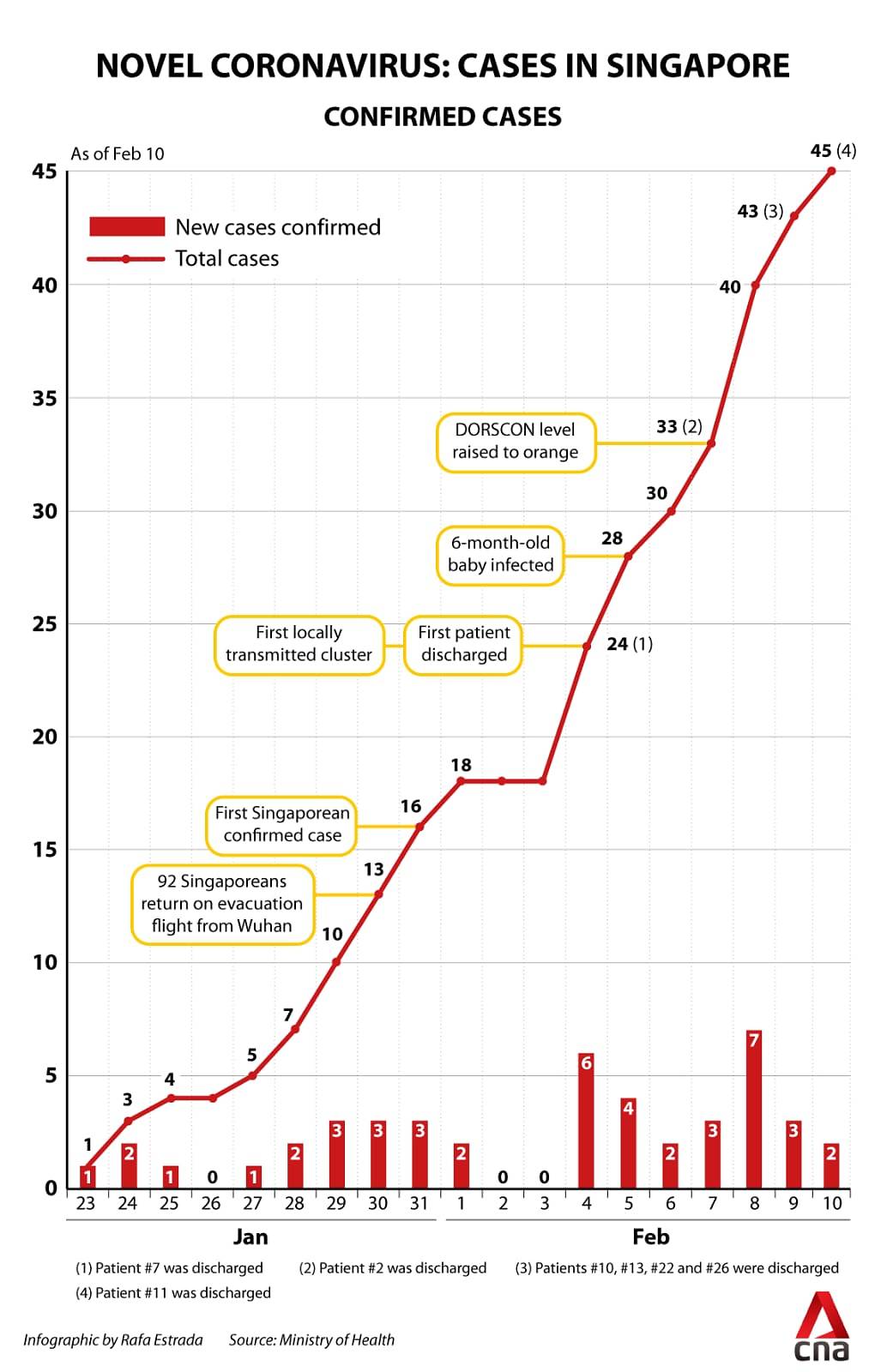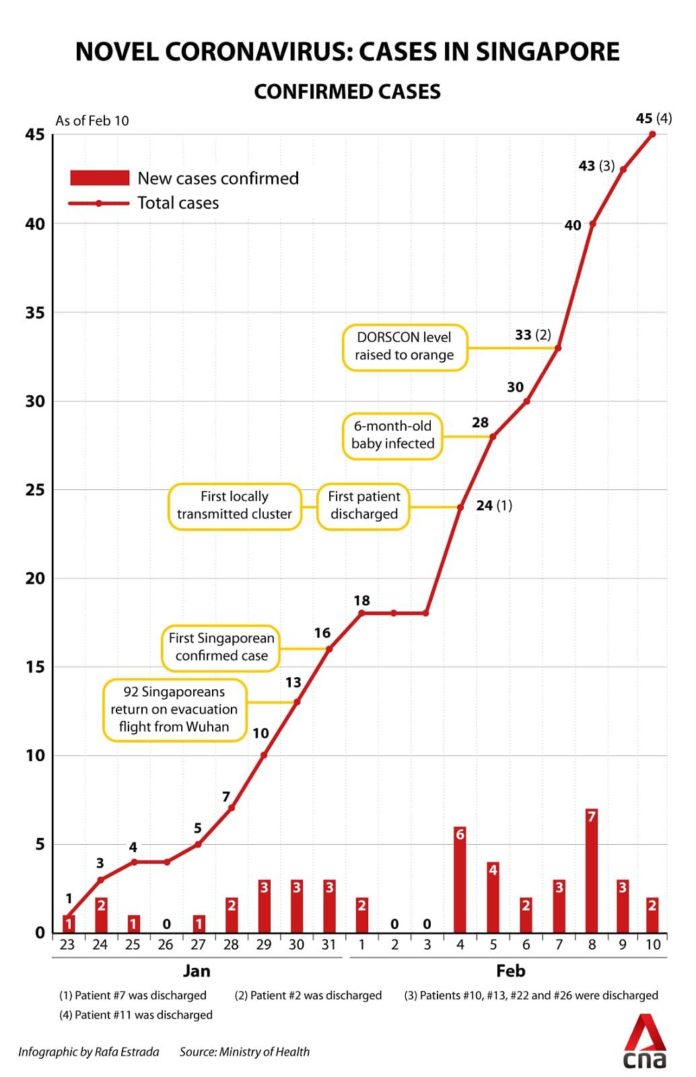SINGAPORE: Among 45 people who have been infected by the novel coronavirus here as of Monday (Feb 10), at least eight of them visited a doctor twice or thrice before testing positive for the virus at a hospital.
One of them, one of the first four local transmissions, even did a chest X-ray in the emergency department at a hospital and was discharged after results came back negative for pneumonia.
READ: Coronavirus cases in Singapore: Trends, clusters and key numbers to watch
READ: 2 new coronavirus cases in Singapore, including Certis Cisco employee who served quarantine orders
This is because in the first week of the disease, symptoms are so mild that they mirror those in all respiratory viruses, said executive director of the National Centre of Infectious Diseases (NCID) Leo Yee Sin.
At this point, the clinical factors can be non-specific and very subtle, such as “a little bit unwell, a little bit of sore throat, a little bit of cough”, Prof Leo said on Monday.
She was speaking on the sidelines of a conference that brought together scientists and researchers to share their work surrounding the virus.
“These are very common manifestations of all the respiratory viruses that can cause acute respiratory illness.
“So just by these clinical indicators, we cannot tell whether it’s this coronavirus or (a) thousand and one different viruses out there that can cause acute respiratory illness,” she said.
DISEASE PROGRESSES IN SECOND WEEK
The pattern of the disease so far is that it is mild to begin with, and therefore “very hard” to differentiate from other viruses, but that changes in the second week, she said.
“The disease tends to be very slow moving during the first week. At the end of the first week, in the second week, you can see a much faster pace of disease progression, and mostly the lung manifestation will appear around that period,” she said.
READ: What we know about the 5 families among Singapore’s confirmed coronavirus cases
This could be one reason why the number of critical cases is increasing, she added.
“As the disease progresses, you will see more severe cases. Severe cases at this point of time are still very much a lung disease, pneumonia,” she said.
As of Monday, Singapore has reported 45 cases of the coronavirus and seven patients are now in critical condition while seven have recovered and been discharged.
Testing for the virus can currently only be done in hospitals.

WIDER CASE DEFINITION
Health Minister Gan Kim Yong last week said that his ministry has expanded the case definition for the novel coronavirus.
“We are now doing proactive case finding. This means never mind a connection to China. When they have pneumonia, I want to know if this is novel coronavirus. We are investigating more cases, so we are discovering more cases,” he said.
READ: ‘I thought I had the common cold’: Singapore’s second coronavirus patient on her experience
When asked whether the definition of people who could potentially get infected was expanded too late, Dr Leo said:
“As we know more about the disease transmission, we continue to tweak the case definition. Things are evolving, we are responding to the changes to make the system better.”
In its latest circular to doctors on Feb 4 seen by CNA, the Ministry of Health (MOH) said among those who should be referred to hospital for further management are cases who have had frequent or close contact during work with recent travellers from mainland China within the past 14 days, if they also have an acute respiratory illness of any degree of severity.
General practitioners CNA spoke to said that even if a patient has had a close contact with confirmed cases of the novel coronavirus, it does not mean they will be automatically classified as a suspect. Doctors have to use their discretion.
READ: Singapore working with international body to develop vaccine for novel coronavirus
That would include too large a pool as it includes healthcare workers, and this would overwhelm the healthcare system, they said.
When it comes to identifying potential novel coronavirus suspect cases, general practitioner Dr Elly Sabrina said there are some factors to take into account.
“I consider if the close contact to a suspect was wearing personal protective gear and whether he had repetitive contact in an enclosed space,” she said. She added that the considerations are arbitrary and evolve daily.





